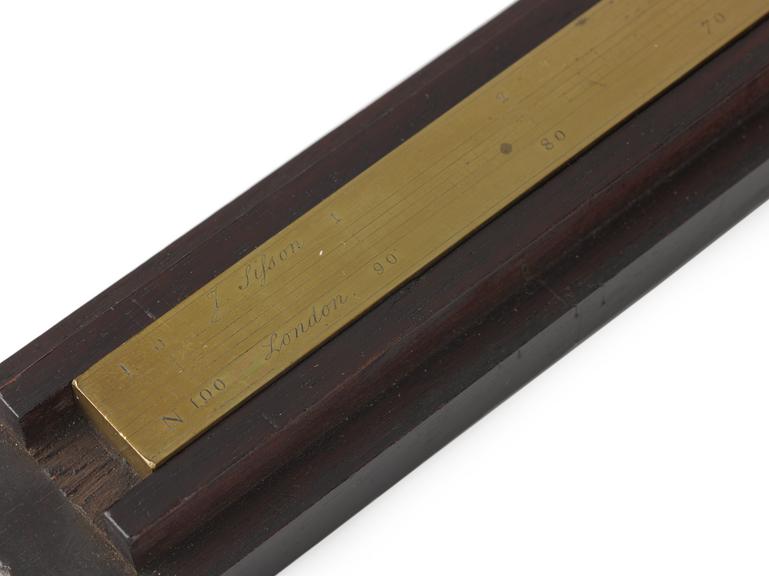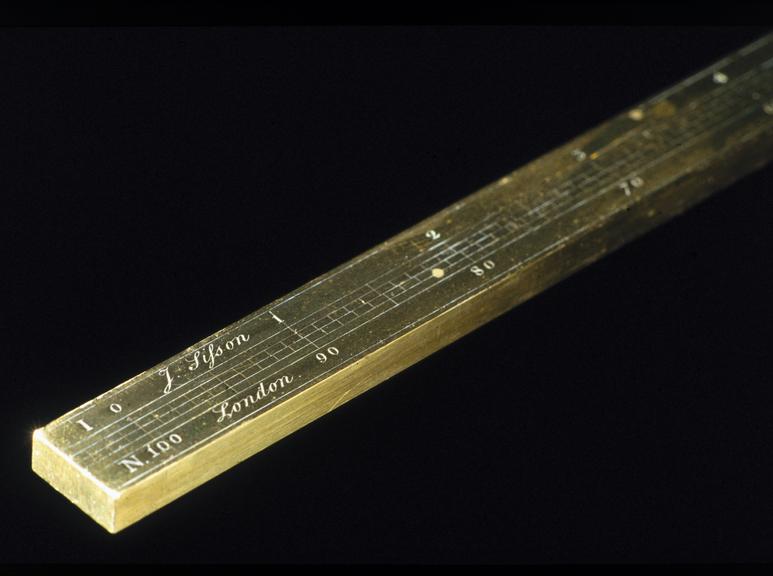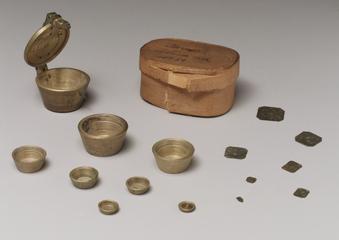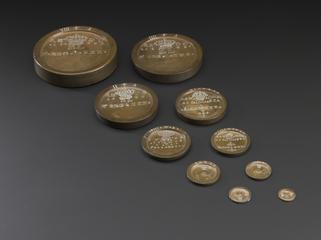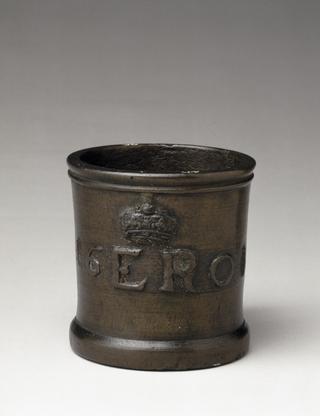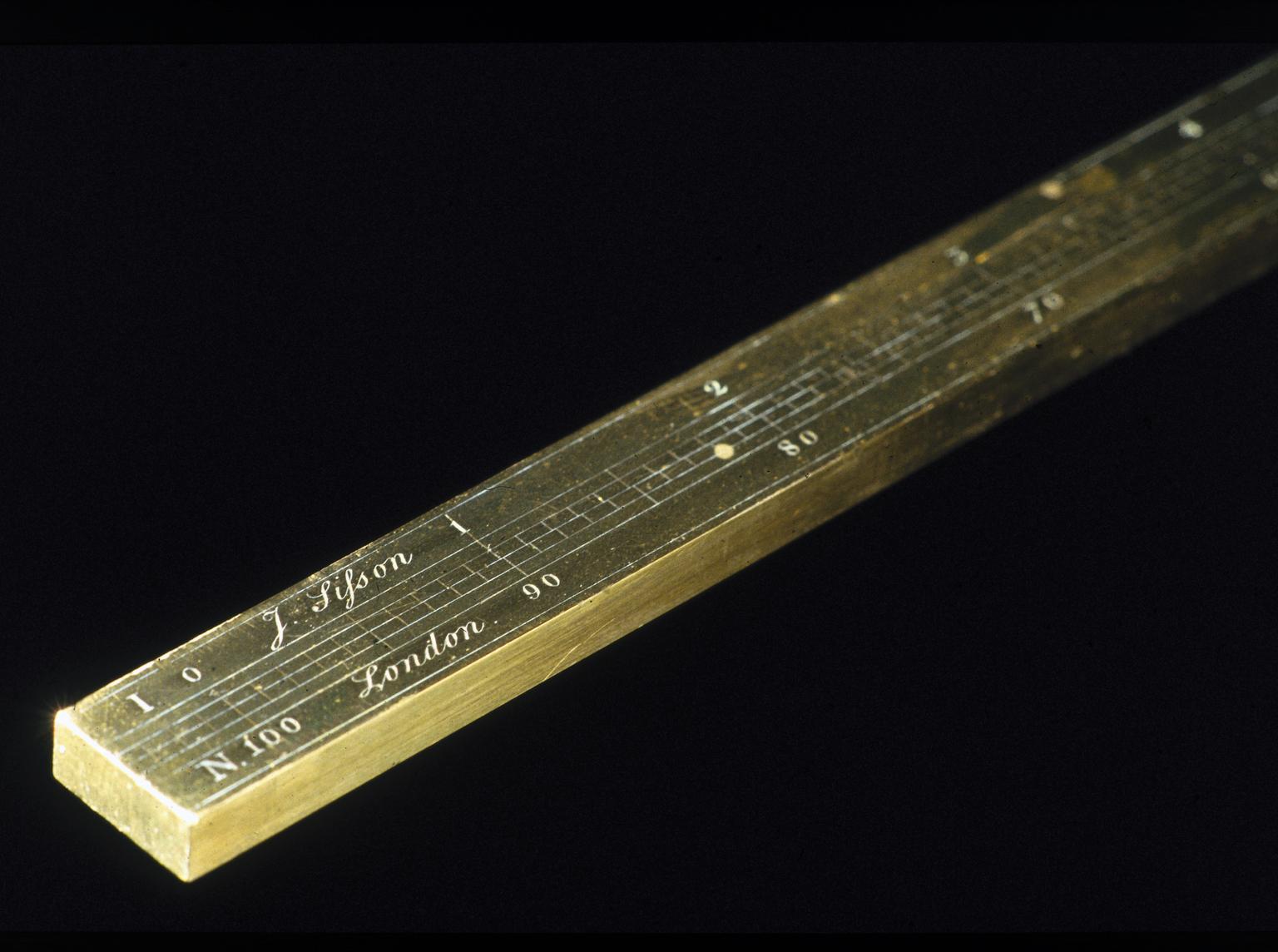
William Roy’s standard scale, 1742
42-inch standard scale marked with a standard yard, made by Jonathan Sisson and divided in 1742 by John Bird, both based in the Strand, London. The scale was owned by surveyor General William Roy and used by him whilst conducting measurements of a baseline at Hounslow Heath in 1784.
More
William Roy led the Anglo-French project to determine by triangulation the relative positions of the Paris and Greenwich observatories. The fist step was the accurate measurement of a baseline; Hounslow Heath was the location selected by Roy.
Accuracy was crucial for this project, as even tiny errors would multiply when measurements spread across the country. Before beginning his measurements in 1784, surveyor William Roy ensured that his scale corresponded with the standard yard held at the Royal Society by comparing them carefully using a microscope. His investigations showed that the scales match exactly. He used the scale, which has a standard yard marked on it, to confirm the lengths of wooden rods used to verify an initial measurement of the baseline with a surveying chain.
- Measurements:
-
Overall: 14 mm x 1090 mm x 7 mm, 0.74 kg
- Materials:
- brass (copper, zinc alloy)
- Object Number:
- 1931-988 Pt1
- type:
- linear measure standard
- Image ©
- The Board of Trustees of the Science Museum




